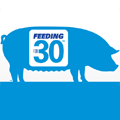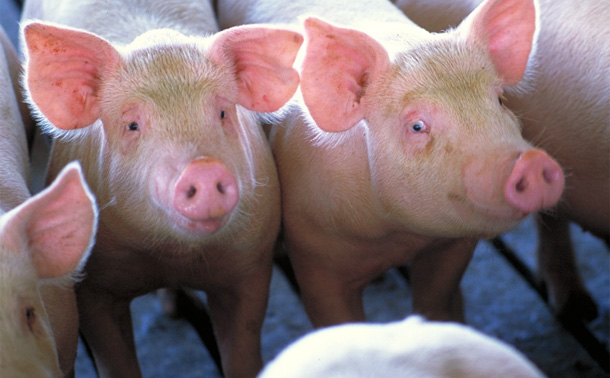 As temperatures continue to heat up across the country, sow producers are encouraged to manage herds accordingly to enhance sow comfort and optimize productivity. Summer sow management is critical as producers work to achieve 30 pigs per sow per year, as reduced feed intake caused from heat stress directly diminishes sow body condition and rebreeding success.
As temperatures continue to heat up across the country, sow producers are encouraged to manage herds accordingly to enhance sow comfort and optimize productivity. Summer sow management is critical as producers work to achieve 30 pigs per sow per year, as reduced feed intake caused from heat stress directly diminishes sow body condition and rebreeding success.
Dr. Gawain Willis, director of nutritional services for Land O’Lakes Purina Feed LLC, says that elevated ambient temperatures make achieving high feed intake in lactation a real management challenge.

“If sows do not maintain high nutrient intake, they will lose too much weight in lactation and may fail to rebreed quickly,” he says. “This can lead to high sow culling rates, which can mean too many sows are culled before they return sufficient income to cover their original investment costs. If sows that lose too much weight do breed back on time, future litter size may be compromised.”
When ambient temperature or humidity rises within swine facilities, sows reach a point where they are unable to dissipate the heat associated with full-feed intake. At that point, Willis says that the sow will consume less feed in order to maintain her core body temperature.

“Even with reduced feed intake, the sow will attempt to maintain milk production; she will break down body fat and muscle to supply the nutrients needed for lactation,” he explains.
Along with added attention to temperature control in the facility, sow feed intake can be maintained by adjusting the ration. Willis recommends decreasing the fiber content of the ration and/or increasing levels of added fat.
These two ration changes lower the heat produced by the sow during digestion, thus lowering her body temperature and the amount of heat she has to dissipate and helping to maintain consumption.
“However, with today’s cost of added fat, the cost benefit will be narrower than it was a few years ago,” he says.
To alleviate the pressures of rising feed costs and enhance feed intake, Willis encourages producers to consider summer feed additives. Additives on the market today allow the sow to better dissipate the heat associated with feed intake so intakes remain stable.
Heat stress can also be prevented by routinely feeding sows during the coolest parts of the day.
“Make sure sows are full-fed and that they have feed available from late evening to early morning,” Willis says, adding that sow movement should be avoided during the day. “Sows are most effective in dissipating heat during overnight hours when the air is cooler.”
Swine producers, veterinarians and nutritionists can learn more about the Feeding for 30TM Program and access nutritional resources by visiting www.Feedingfor30.com or www.facebook.com/Feedingfor30. Management tips also may be received by texting “FF30” to 31256.
Land O'Lakes Purina Feed LLC, in connection with its wholly owned subsidiary Purina Mills LLC, is North America’s leading feed company serving producers nationwide through local cooperatives and independent dealerships by providing an extensive line of animal nutrition, ingredients and expertise.

June 15, 2012 - Feeding for 30


